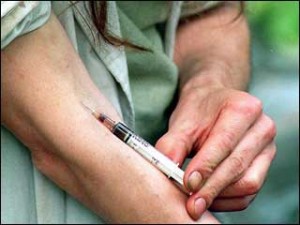Numbers are Tools, Not Shackles
 Medico-legal experts are often confronted with the question in legal proceedings of the lethality of a given concentration of a drug detected in autopsy specimens. Regardless of their credentials, whether they be forensic pathologists, clinical toxicologists or other clinical specialists, some are willing to testify this or that concentration was fatal in the case at hand, because it exceeded the level deemed fatal in a given textbook. Forensic toxicologists and well-informed forensic pathologists are less likely to make this interpretive error. The proper interpretation of the number generated by the laboratory from a given autopsy specimen involves far more than comparing it to another number on a textbook chart or table.
Medico-legal experts are often confronted with the question in legal proceedings of the lethality of a given concentration of a drug detected in autopsy specimens. Regardless of their credentials, whether they be forensic pathologists, clinical toxicologists or other clinical specialists, some are willing to testify this or that concentration was fatal in the case at hand, because it exceeded the level deemed fatal in a given textbook. Forensic toxicologists and well-informed forensic pathologists are less likely to make this interpretive error. The proper interpretation of the number generated by the laboratory from a given autopsy specimen involves far more than comparing it to another number on a textbook chart or table.
As in all sudden, unexpected or violent deaths, the scene and circumstances surrounding the death are critical in evaluating the autopsy findings. Every experienced forensic pathologist has certified the deaths of individuals with gunshot wounds or other fatal trauma who have “lethal levels” of one or the other drugs in their postmortem samples. Conversely, most forensic pathologists have certified deaths as due to one or the other drug despite concentrations “in the therapeutic range” in the postmortem sample. Every case must be analyzed in a holistic fashion, considering as much data as can be obtained.
For example, a known substance abuser is found dead in their apartment. Drug paraphernalia is recovered from the scene. An electronic search of the decedent’s phone reveals an exchange of texts regarding the sale of a drug presumed to be fentanyl. The case is referred to the medical examiner who opts to draw blood from the subclavian vein for toxicology and forgo a complete autopsy. Subsequently, the lab reports a fentanyl concentration of 23.7 ng/mL. A person of interest from the text messages is arrested and charged with death resulting from the fentanyl provided to the decedent.
The state’s expert is prepared to testify that the detected concentration of fentanyl was fatal based on clinical fatal concentrations published in a toxicology textbook and is the cause of death. The following represent but three lines of inquiry that renders this case rife with reasonable doubt and points up the abject failure inherent in relying on a number to opine that a given drug caused death.
- Lack of autopsy – The phrase “a cause of death, but not the cause of death” is apropos here. To opine a death is due to a drug without the essential knowledge an autopsy can provide (stroke, pulmonary embolism, florid endocarditis among others) is little more than informed speculation. This is inadequate when a person’s freedom is at stake
- Tolerance – this is a well-known phenomenon in substance disorders that is not adequately addressed by simply certifying based on a laboratory number. Is the decedent naïve to the drug in question? (particularly important in the case of opiates). History cannot be ignored as this is ignoring reality for the sake of perceived objectivity.
- Prolonged comatose state – Conversely, it is reasonable to infer, armed with a complete autopsy that rules out a compelling alternative or intervening cause of death, that a low level (‘therapeutic” or lower according to a textbook) of the drug in question is the agent of death. Opiates in particular can induce respiratory depression and coma, allowing the decedent to metabolize their fatal dose to levels that appear unremarkable post-mortem.
- Sample site and postmortem redistribution – In the sample case above, subclavian blood was submitted for toxicology. This is little better than blood drawn directly from the heart and the result is likely to skew higher, perhaps substantially so by the phenomenon of postmortem distribution of drug bound to tissues. Sample site and technique matter. Optimum postmortem toxicology samples are those from peripheral sites, typically the femoral vein.
- Drug-drug interaction – Does the drug in question pass the “but for” test? Is the death due to a mixed drug intoxication? If so, would the decedent have died but for the drug for which a defendant is accused of providing?
In summary, numbers are to be used as tools to assist in the interpretation of postmortem toxicology laboratory results. Treating them as shackles to which undiscerning automaton technicians are tethered is the antithesis of critical thinking and renders years of training and experience in the complex field of forensic pathology moot.

